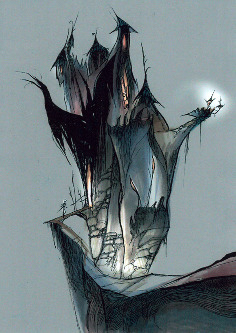Vince Matthews on Digital Disney: An Interview with Deane Taylor
Page 2 of 4

LP: Working with videogames to some extent is like working in a studio. You have a game engine that has a 3D space with lighting and various environments – is it all that different?
DT: The role in the game production was inherently different. To assimilate reality to make it match the flavor of the film, you have to twist it back out again. (It’s) like re-heating a steak. The challenge was different, the responsibility to the end product, the same. Even though the mold was created in the film, (it’s) not a simple task of popping out another one. This was a difficult sensibility to achieve, and all credit to the crew in Japan – who I believe filled this role exceptionally well.
LP: What made you want to take part in the game? Was it an offer from the development team, or something you sought out when you heard the game was being made?
DT: I was contacted by Chris Takami from Buena Vista Games who had met up with an Australian games company called Ratbag, at a games convention in L.A. I had done a little work with them, and when their conversations revolved around the Nightmare project, my name came up. In what context I wouldn't be 100% sure, but it did come up.
LP: Was there anything that the game allowed you to do that just wasn’t possible in the movie (beyond the fact that it was a stop-motion production and everything had to be storyboarded out to the last detail, of course)?
DT: It allowed me to go to Japan, which was pretty much out of the question on the movie.
LP: You’re quite the joker. Seriously…
DT: I guess the biggest difference was freedom of scale and atmospheric elements. If you need the graveyard to be ten miles wide, you can do it without having the set extend out the back door and into the alley. If you need slowly moving cloud shapes you can do it without sticking cotton wool onto bridal veil stretched over a frame. As far as the planning goes...I don't believe any pre-production shortcuts were really made. In fact, from what I've learnt about the virtual world is that in many ways, you're planning needs to be much greater.
LP: How much freedom were you given to create new environments and characters? Did you feel a certain loyalty to the source material and Burton’s inspiration?
Tim's source material contains the absolute essence of this place and these people. We (have) total freedom, given that you have to capture this essence - the hardest thing to do is improve on that first sketch, so creative freedom is very relative.
LP: How is art direction different or more difficult working in with game’s than compared to a movie? Any particular challenges that couldn’t be tackled in the game?
DT: The biggest challenge is to hold back. Because you do have the ability to do anything...the tendency is to do it. There is a danger here of making everything dessert, instead of creating a three course meal. Good ideas, strong visuals, I believe should be enjoyed - not diluted by an over saturation of FX and multi layered production value. Less is more. This seems to me to be the big difference between games and movies. It's the difference between sixteen heavy metal leads on stage...or Keith Richards.
LP: Was this your first experience with games? Any plans to do Art Direction for games again?
DT: I've done about a gnat's whisker amount of games work...and yes I have very big plans for future game development. For me it can be a new form of storytelling, and a way to execute extremely adventurous design that might otherwise not be possible.
